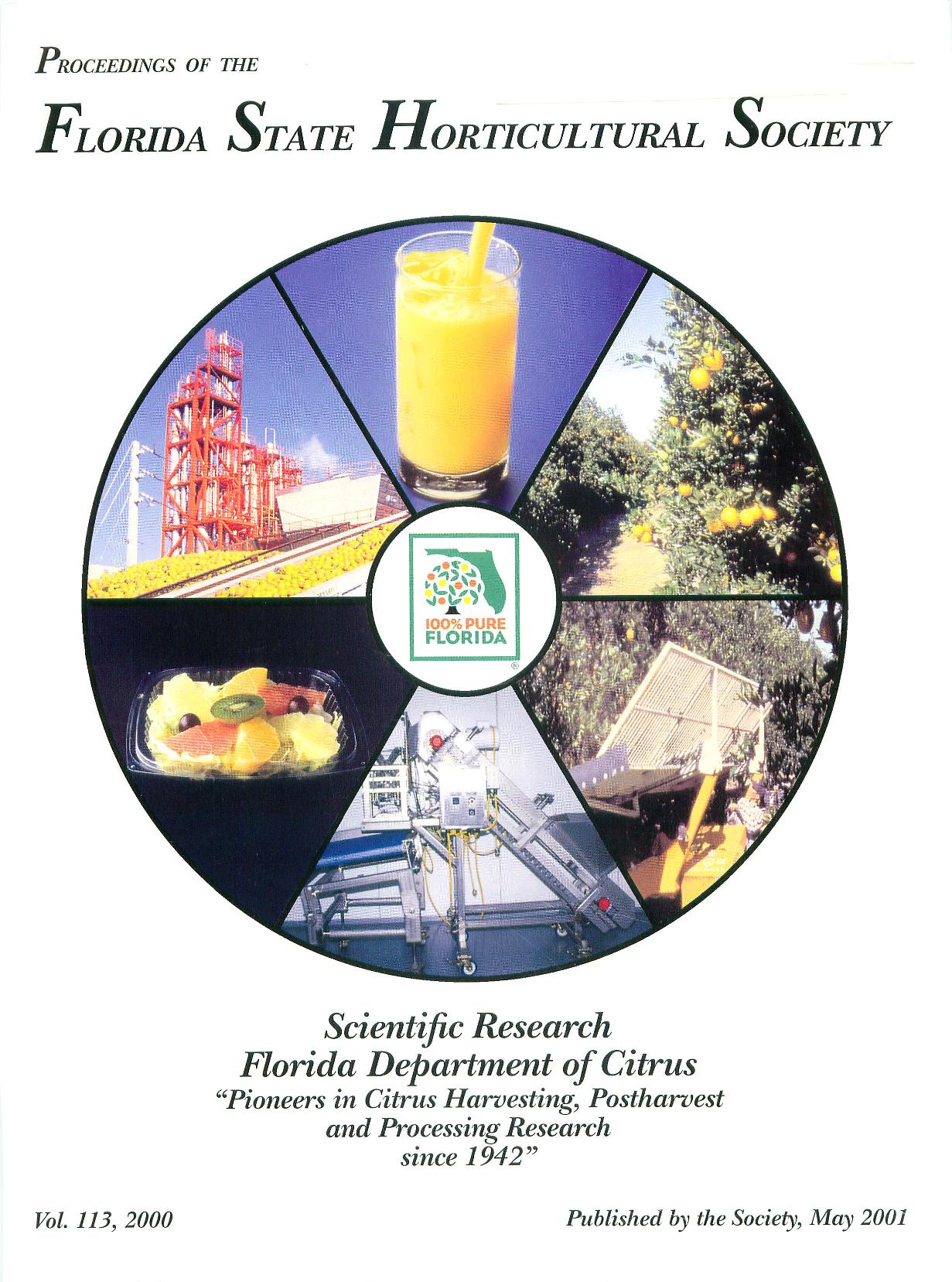Krome Memorial Institute (Tropicals)
Variation and correlation of bud breaking, flower opening and fruit ripening in muscadine grape cultivars
Abstract
The most important muscadine grape cultivars used as table grapes are pistillated and need pollinators in order to set fruits. This study investigated the anthesis time and pollen quality among the major muscadine cultivars, from which different perfect-flower cultivars are hopefully recommended as pollen donors for females. Thirty-four cultivars (15 female and 19 self fertile) grown in the Experimental Vineyard at Florida A&M University were chosen for this study. Time for flower opening in 1%, 50% and over 90% were recorded for each cultivar. The earliest anthesis was found in Triumph' and Try', while the latest were 'Summit' and 'Marsh'. Triumph', 'Southern Home', 'South Land', 'Digby', 'Doreen' and 'Alachua' began anthesis earlier and had shorter duration time than other perfect- flower cultivars. The anthesis of 'Senoia' and Tara'was the latest among the perfect-flower cultivars. The perfectflower
cultivars 'Carlos', 'Nesbitt', Cowart' and 'Noble' had a long duration of anthesis that overlapped many pistillate culti vars and should be considered as good pollinators. According to the different time of anthesis, fifteen female-flower cultivars can be divided into early and late groups. The early group was 'Fry', 'Rosa', 'Higgins', 'Jumbo' and 'Pink Hunt'. The late group included 'Black Fry', 'Sweet Jenny', 'Big Gill', 'African Queen', 'Pam', 'Darlene', 'Farrer', 'Black Beauty', 'Supreme' and 'Summit'. Based on the anthesis time, 'Alachua', Triumph' are recommended as pollinators for the early anthesis female cultivars, while 'Senoia' and Tara' are recommended for the late-anthesis female cultivars. 'Noble', 'Coward', 'Carlos' and 'Nesbit' can be used for both early- and late-anthesis cultivars. Correlation among bud breaking, flower opening and fruit ripening was estimated among the 20 selected cultivars. Results showed that there are some correlations between bud breaking and anthesis, anthesis and fruit ripening.

